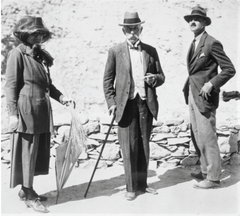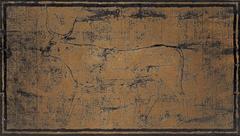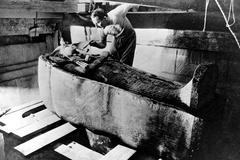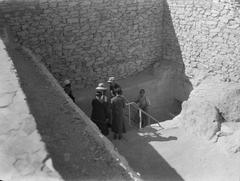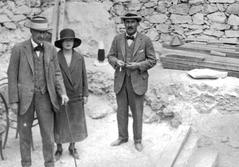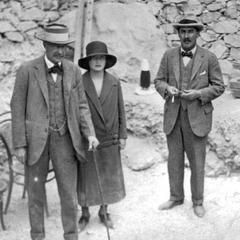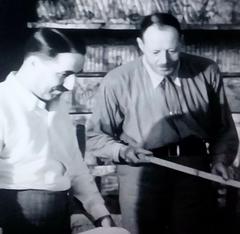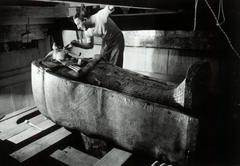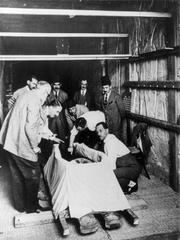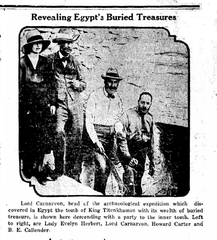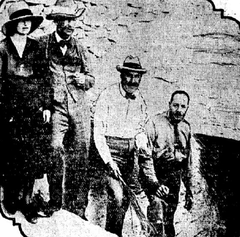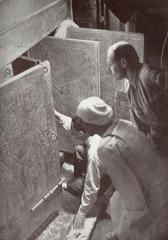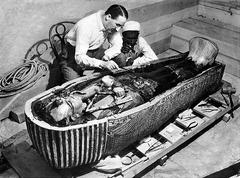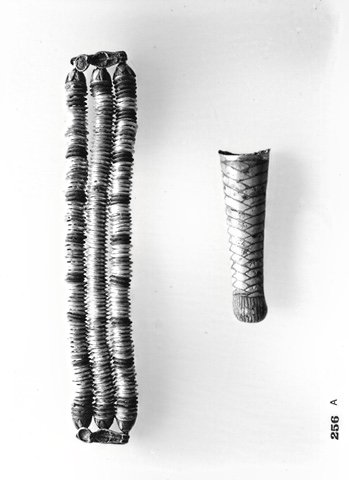
Visiting the Tomb of Tutankhamun in Luxor, Egypt: Tickets, Hours, and Expert Tips
Date: 14/06/2025
Introduction
The Tomb of Tutankhamun (KV62), hidden in Egypt’s legendary Valley of the Kings near Luxor, stands as one of the most captivating archaeological sites in the world. Since its discovery by Howard Carter in 1922, the tomb has provided a unique window into ancient Egyptian burial practices, royal artistry, and New Kingdom religious traditions. Remarkably, unlike most royal tombs, Tutankhamun’s final resting place was found largely intact, preserving a treasure trove of artifacts and vibrant wall paintings that continue to inspire and fascinate visitors and scholars alike (The Archaeologist; Explore Luxor).
This guide offers a detailed overview of the tomb’s historical and cultural significance, practical information on visiting hours and ticketing, accessibility considerations, and tips for making the most of your visit to Luxor. Whether you are a history enthusiast or a curious traveler, understanding how best to experience Tutankhamun’s tomb is essential.
Table of Contents
- The Discovery of Tutankhamun’s Tomb
- Historical Context: Tutankhamun and the 18th Dynasty
- Tomb Architecture and Layout
- Archaeological Significance and Treasures
- Visiting Tutankhamun’s Tomb: Hours and Tickets
- Travel Tips and Accessibility
- Nearby Attractions and Special Events
- Preservation and Display of Artifacts
- Continuing Research and Legacy
- Frequently Asked Questions (FAQ)
- Conclusion and Call to Action
- References and Further Reading
The Discovery of Tutankhamun’s Tomb
Tutankhamun’s tomb (KV62) was discovered on November 4, 1922, by British archaeologist Howard Carter, backed by Lord Carnarvon. The tomb, concealed beneath debris in the Valley of the Kings, was one of the few to remain almost untouched by looters for over three millennia (The Archaeologist; Explore Luxor). Upon entering the burial chamber, Carter famously described seeing “wonderful things”—a reference to the dazzling artifacts and treasures within.
This discovery not only illuminated ancient Egyptian burial customs but also reignited global fascination with Egyptology and the mysteries of the pharaohs (History Cooperative).
Historical Context: Tutankhamun and the 18th Dynasty
Tutankhamun ruled Egypt during the 18th Dynasty, approximately from 1332 to 1323 BCE. He assumed the throne as a child and reigned for around a decade, overseeing the restoration of traditional Egyptian religion after the radical reforms of Akhenaten, his predecessor (History Cooperative; Explore Luxor).
The cause of Tutankhamun’s early death at about 19 years remains debated, with studies pointing to possible malaria, a fractured leg, and congenital conditions (The Archaeologist). Though a minor figure in life, the discovery of his tomb propelled him to global fame.
Tomb Architecture and Layout
Tutankhamun’s tomb is smaller and less elaborate than those of other pharaohs, likely due to his unexpected demise. The structure includes four main chambers (The Discoveries Of):
- Antechamber: Originally filled with everyday items and treasures for the afterlife.
- Annex: Storage for additional funerary goods.
- Burial Chamber: The only chamber with decorated walls, featuring scenes from the Book of the Dead and rituals like the “opening of the mouth.”
- Treasury: Housed the canopic chest and statues.
The tomb’s modest size and its concealment beneath later debris played a key role in its preservation (Explore Luxor).
Archaeological Significance and Treasures
The tomb yielded over 5,000 artifacts, offering an unparalleled glimpse into ancient Egyptian culture (The Archaeologist). Among the most famous finds:
- The nested coffins, with the innermost made of solid gold (The Archaeologist).
- The iconic gold funerary mask, inlaid with precious stones (History Cooperative).
- Gold chariots, ceremonial beds, and thrones.
- Canopic jars and model boats.
- Personal items such as clothing and board games.
The preservation of these artifacts has allowed researchers to reconstruct New Kingdom burial customs and religious beliefs (The Discoveries Of).
Visiting Tutankhamun’s Tomb: Hours and Tickets
Opening Hours
- Regular Hours: Daily from 6:00 or 6:30 AM to 5:00 PM (last entry typically 4:00 PM; hours may vary seasonally or on holidays).
- Summer (April–September): 6:00 AM – 6:00 PM
- Winter (October–March): 6:00 AM – 5:00 PM
- Ramadan: 6:00 AM – 5:00 PM
Tickets and Entry
- General Valley of the Kings Ticket: Required for site entry (typically includes three tombs, excluding Tutankhamun, Seti I, and Ramses V/VI).
- Tutankhamun’s Tomb Ticket: Separate ticket required, available at the Valley of the Kings ticket office (Her Asian Adventures; Travel2Egypt).
- Adults: 700 EGP (~$14)
- Students: ~50% discount with valid ID
- Photography Permit: 300 EGP (~$6) for non-flash photography.
- Electric Train Shuttle: Included in ticket price; transports visitors from the visitor center to the tombs.
Note: Tickets are valid for a single entry on the purchase day and must be paid for in Egyptian pounds. Each tomb can be entered only once per ticket.
Travel Tips and Accessibility
- Guided Tours: Guides are not allowed inside tomb chambers but can provide valuable context beforehand. Many tours combine Tutankhamun’s tomb with other major sites (Intrepid Scout).
- Accessibility: The approach to the tomb includes ramps and steps; interior spaces are narrow and may not be fully accessible to those with mobility challenges.
- Best Time to Visit: Early morning and late afternoon to avoid both crowds and extreme heat.
- Facilities: Restrooms and souvenir shops are available at the visitor center.
Inside the Tomb: What to Expect
- Duration: Visits inside the tomb typically last 10–30 minutes due to limited space and visitor flow.
- Atmosphere: The burial chamber displays vivid wall paintings and Tutankhamun’s mummy in a climate-controlled case. Most treasures are in the Egyptian Museum in Cairo or the Grand Egyptian Museum.
- Photography: Permitted only with a special ticket; flash is strictly prohibited to protect the artwork.
Nearby Attractions and Special Events
- Howard Carter House Museum: Exhibits from the original excavation and a replica tomb (Popular Archaeology).
- Temple of Hatshepsut: Monumental mortuary temple nearby.
- Colossi of Memnon: Two massive statues near the Valley entrance.
- Other Tombs: Ramses V & VI, Seti I, and the Tombs of the Nobles.
- Replica Tomb: A detailed reproduction near Carter’s house for preservation and educational purposes.
Preservation and Display of Artifacts
The vast majority of Tutankhamun’s treasures are displayed in Cairo’s Egyptian Museum and the Grand Egyptian Museum in Giza. The original tomb remains open to visitors but is carefully managed to protect the delicate murals and mummy (CNN; Tom Henty’s Travel).
Notable conservation projects include climate controls, improved ventilation, and visitor limits. A full-scale replica, created using 3D scanning, allows for immersive experiences while preserving the original (Factum Foundation).
Continuing Research and Legacy
Ongoing research uses advanced technologies such as CT scans and DNA analysis to study Tutankhamun’s remains and tomb architecture, providing insight into dynastic history and ancient Egyptian health (The Archaeologist).
The tomb’s discovery and continued exploration have shaped both Egyptology and global perceptions of ancient Egypt (Explore Luxor).
Frequently Asked Questions (FAQ)
Q: What are the opening hours for Tutankhamun’s tomb?
A: Generally open daily from 6:00 or 6:30 AM to 5:00 PM; last entry is typically at 4:00 PM. Hours may vary by season or during holidays.
Q: Can I buy tickets online?
A: Tickets must be purchased at the Valley of the Kings entrance; online pre-purchase is not currently available.
Q: Is the tomb accessible for visitors with disabilities?
A: The tomb has ramps and steps; interiors are narrow and may be challenging for those with mobility issues.
Q: Is photography allowed inside the tomb?
A: Yes, with a special permit (300 EGP); flash is not allowed.
Q: Are guided tours available?
A: Yes, but guides provide commentary outside the tomb chambers.
Q: What should I bring?
A: Water, sun protection, comfortable footwear, and cash for tickets.
Conclusion and Call to Action
A visit to the Tomb of Tutankhamun is a journey into the heart of ancient Egypt, offering a rare chance to experience royal burial traditions, exquisite art, and the enduring mystery of one of history’s most famous pharaohs. Plan ahead by checking opening hours, securing tickets early, and considering guided tours to enrich your understanding.
Explore nearby historical treasures in Luxor, and for the latest updates, download the Audiala app for exclusive content and virtual tours. Respect visitor guidelines to help preserve this extraordinary site for future generations.
References and Further Reading
- The Archaeologist
- Explore Luxor
- History Cooperative
- The Discoveries Of
- Intrepid Scout
- CNN
- Popular Archaeology
- Factum Foundation

